Menu
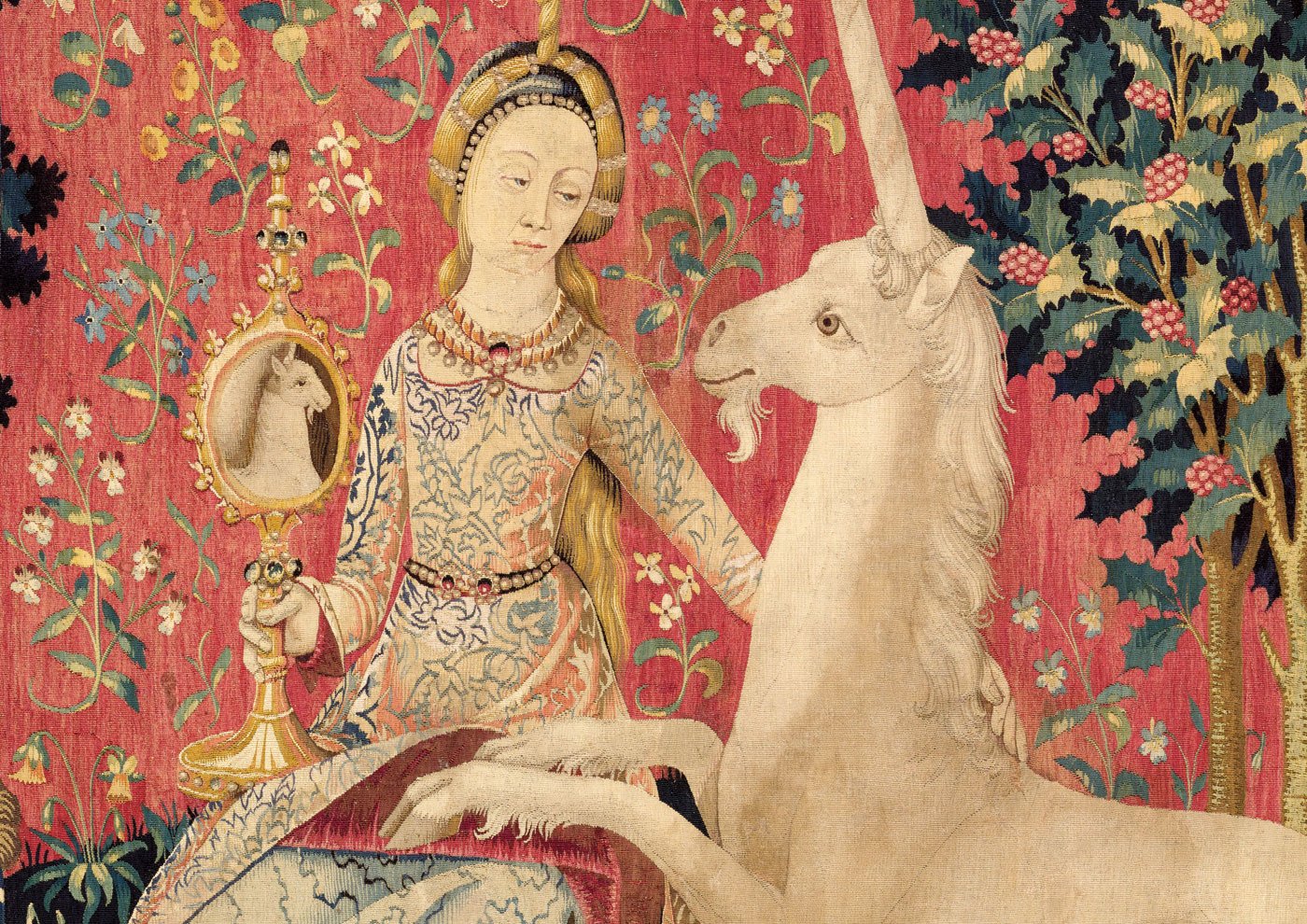
'Sight', c1500 (detail), from the series 'The lady and the unicorn', Musée de Cluny – Musée national du Moyen Âge, Paris
The lady and the unicorn
Discover the stories behind the tapestries of medieval French art that have captivated viewers across the centuries.
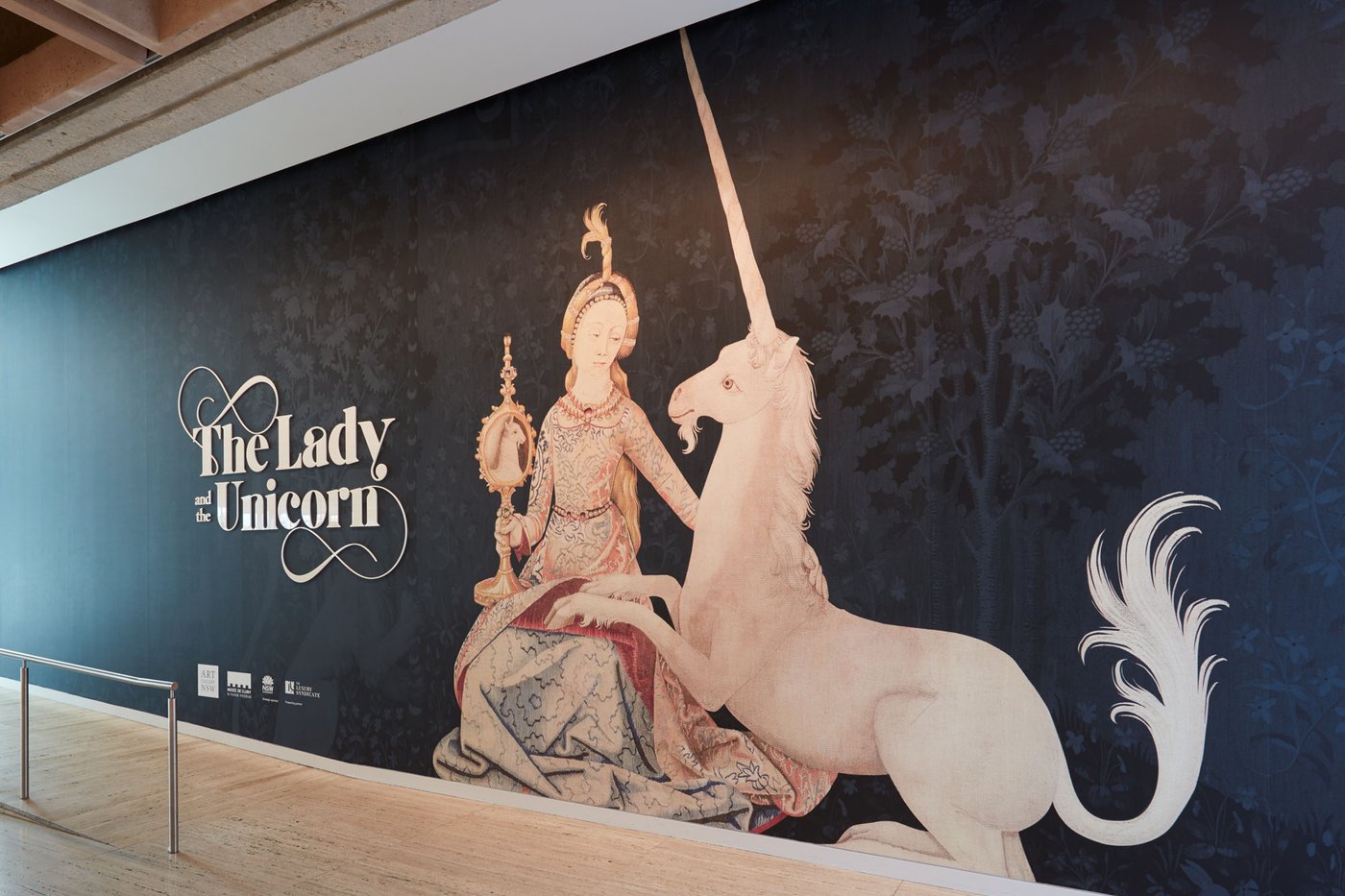
The lady and the unicorn
Created around 1500, The lady and the unicorn tapestries have been the subject of literary inspiration, scholarly speculation and wonder ever since.
While little is known of their early years, they were rediscovered in the 19th century in the Château de Boussac, a small castle in Creuse in central France. On seeing them in 1841, Prosper Mérimée, inspector general of historic monuments, recognised the tapestries as exceptional in both originality and quality. Expressing concern over their condition, he recommended they be purchased for the state.
Around the same time, novelist George Sand contributed to their fame by writing about the ‘curious enigmatic tapestries’ in her 1844 novel Jeanne. She adds: ‘These finely worked scenes are masterpieces and, if I am not mistaken, quite a curious page of history.’
After lengthy negotiations, the town of Boussac agreed to sell the tapestries to the state in 1882. They have lived at the Musée de Cluny – Musée national du moyen Âge in Paris from that time.
Theme
The tapestries
The six tapestries can be viewed as an allegory of the five senses – sight, hearing, taste, touch and smell – plus a sixth ‘internal’ sense – heart, desire or will.
Made at the very moment of transition from the Medieval period to the Renaissance, they continue to reveal a poetic medieval world of the senses, the spirit, romance, chivalry and morality.

Video
Unravel the mystery of The lady and the unicorn
Length: 0:34
Theme
The unicorn
In the Middle Ages, everyone believed in unicorns. Mentioned several times in the Bible and recorded since antiquity, few had reason to doubt its existence.
Theme
Who were they made for?
The tapestries were commissioned by the Le Viste family, an upwardly mobile family from the city of Lyons.
Poetic threads
'This is the animal that doesn’t exist.’
— Rainer Maria Rilke
The rare medieval tapestries that are ‘The lady and the unicorn’ have long inspired writers. In May 2018, as part of the Sydney Writers’ Festival 2018, they inspired a unique new production. Poetic threads saw celebrated performers Mirrah, Candy Royalle and Scott Wings commissioned to create poetic responses to the tapestries which they then performed amidst the mysterious textile treasures.
Presented by the Art Gallery of NSW, Red Room Poetry and Sydney Writers’ Festival and supported by Atelier, the next generation of benefactors at the Art Gallery of NSW.
Art and history: France c1500
In the 14th century, Western Europe was rocked by events like the plague epidemic (from 1339), the Hundred Years War between France and England (1337 to 1454), and the Western or Papal Schism – a rivalry between several concurrent popes – (1378 to 1417).
But by the late 1400s, a new form of economic prosperity had allowed art to flourish in France, just as it had in Italian cities such as Florence. And the technical innovation of the printing press in 1454 helped revolutionize intellectual and artistic circuits in Europe through the reproduction and distribution of texts and images.
During the second half of the 15th century, Louis XI (1461-1483), his son Charles VIII (1483-1498), followed by a cousin, Louis XII (1498-1515) succeeded one another on the throne of France. Around them were powerful princes and nobles, as well as influential officers and merchants. At the end of the century, Charles VIII and Louis XII launched military campaigns to Italy: Charles VIII to Naples and Louis XII to Milan. These wars in Italy increased contact between the French elites and Italian art, (though contact already existed through religious and commercial networks) and soon the shift began, from what we call the medieval period, to that we call the Renaissance.
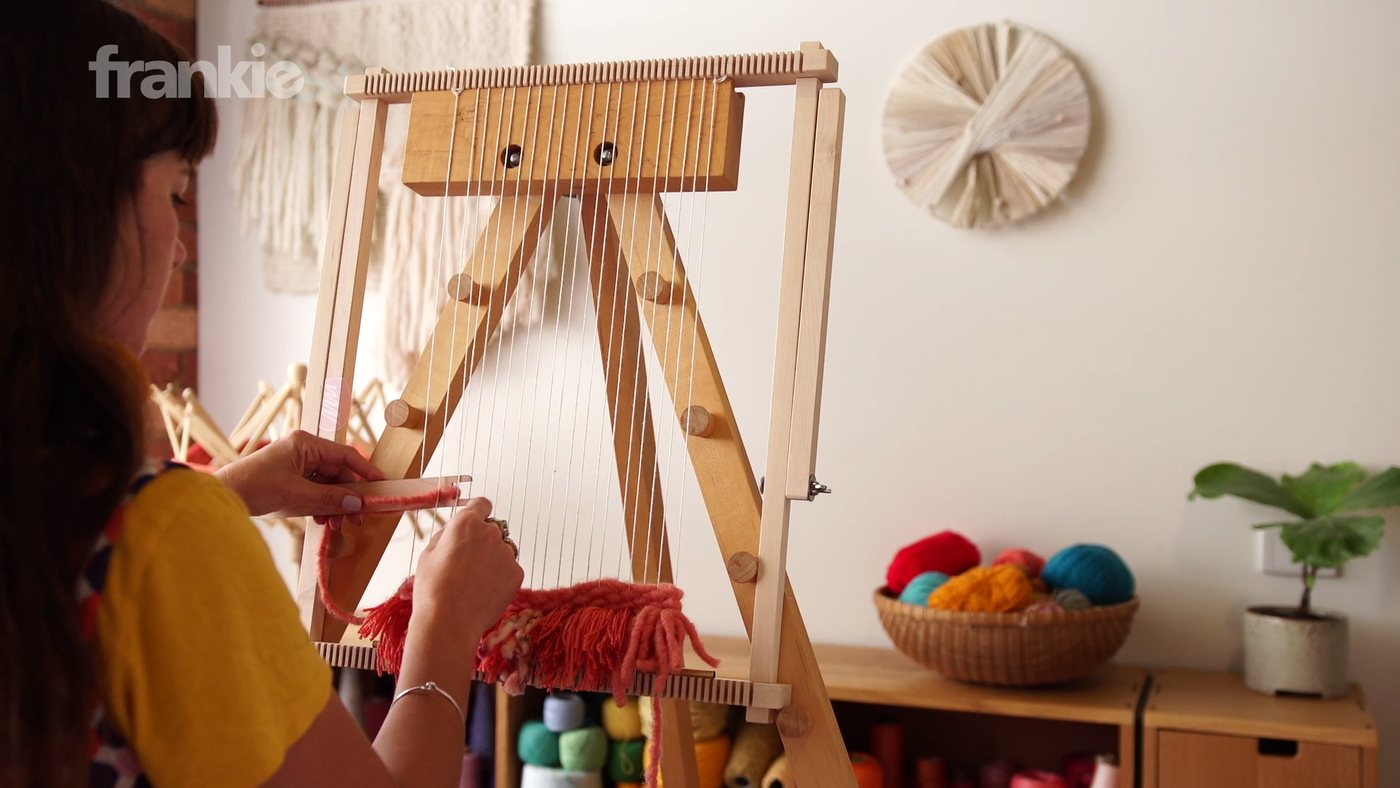
Video
A cute handloom project, with 'The lady and the unicorn’
Melbourne weaver Maryanne Moodie talks us through how to make a stunning handloom weaving.
Presented in partnership with frankie magazine
Length: 4:52
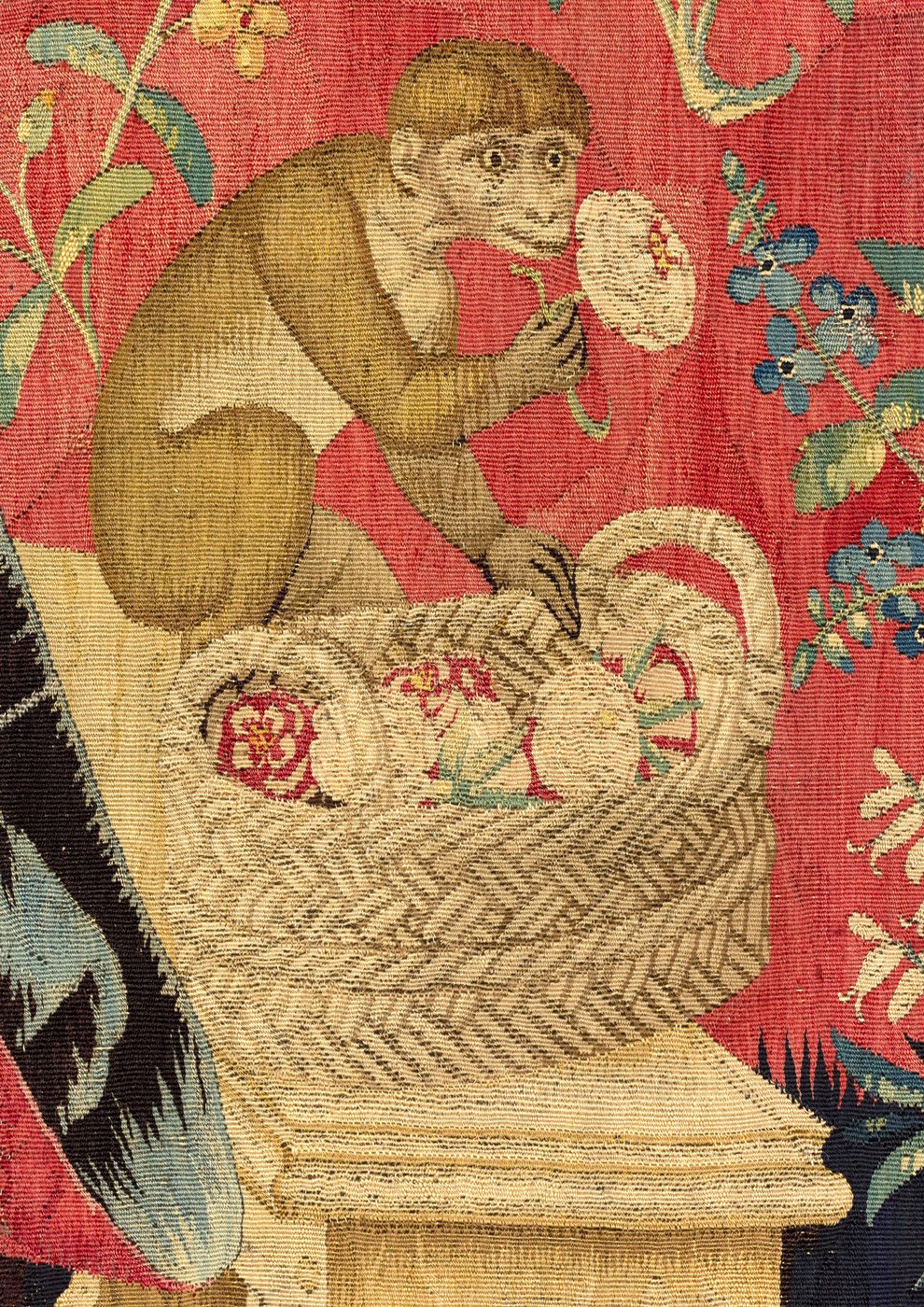
Medieval symbols
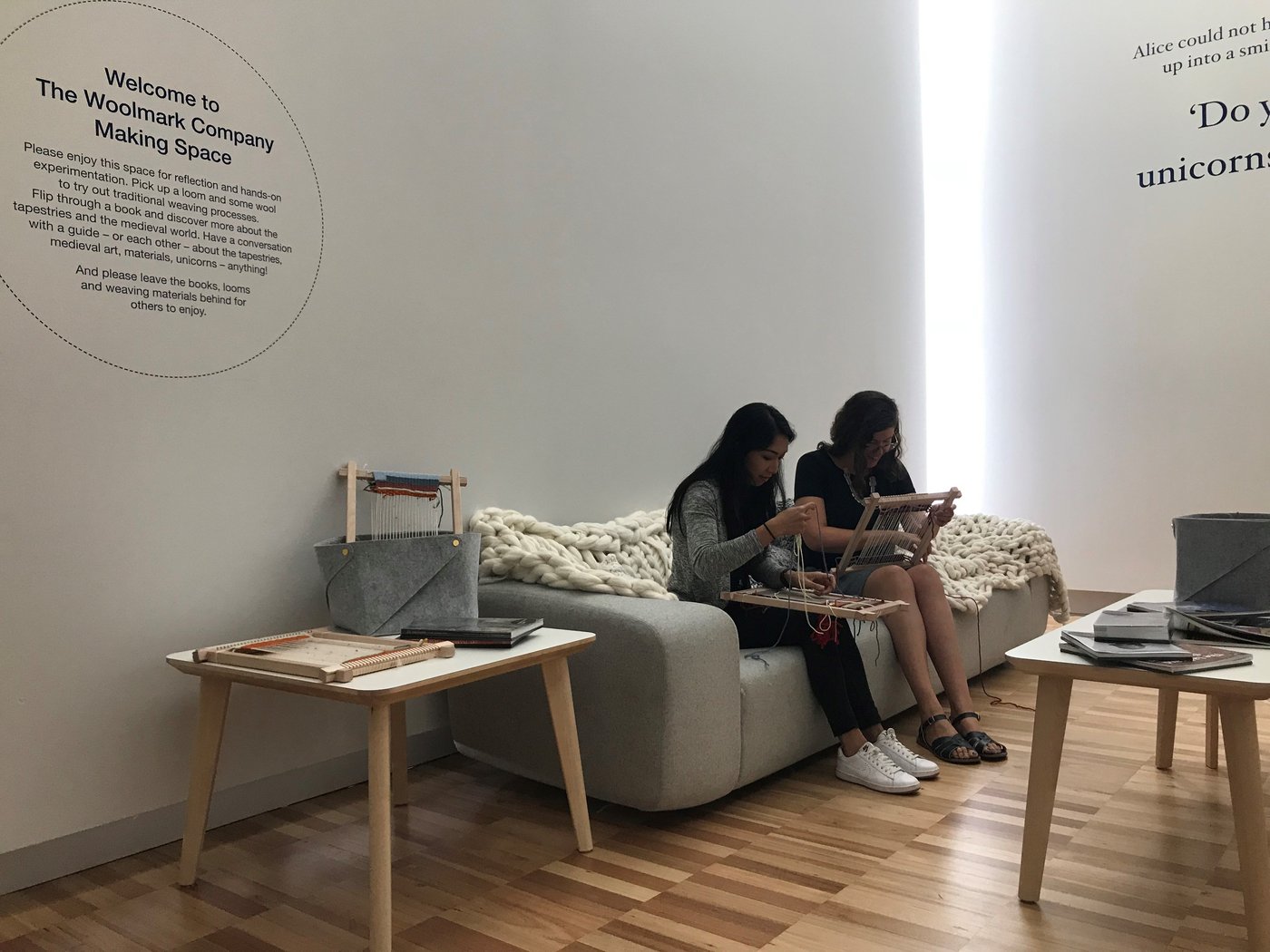
The Woolmark Company Making Space
Come and visit The Woolmark Company Making Space within the exhibition, it offers a space for reflection and hands-on experimentation. Pick up a loom and some wool to try out traditional weaving processes whilst experiencing the versatility and tactility of Australian wool. Flip through a book and discover more about the tapestries and the medieval world.

